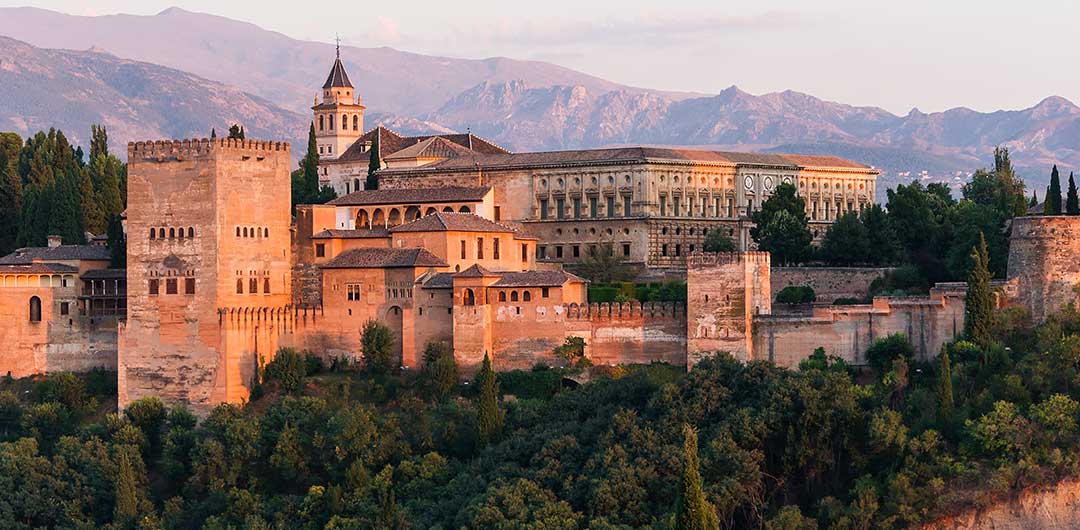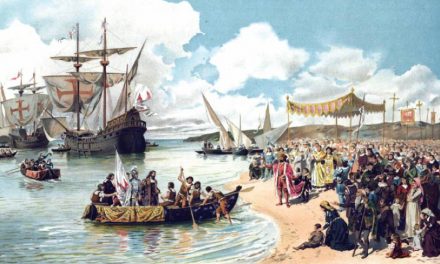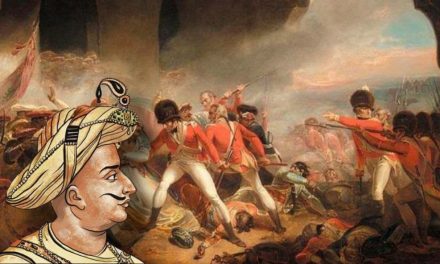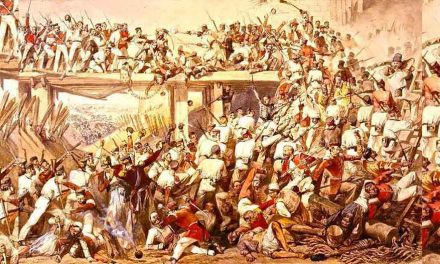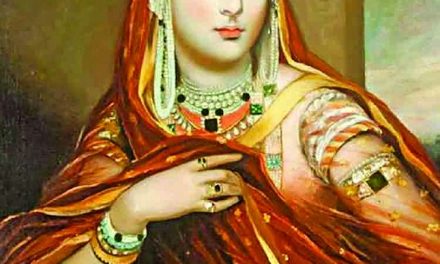Most European countries are recognized for their outstanding art and architecture. People from all around the world gather in countries like Italy, Germany, Spain, France to embrace the beauty of these fine arts. Whenever in Paris, France, a visit to the Eiffel Tower is an opportunity that must not be missed. Similarly, the Colosseum in Rome, Italy is another magnificent work of art that leaves all tourists in awe. On the same pedestal stands another splendid masterpiece that marks the beauty of Spain, to the fullest- the Alhambra Palace of Grenada, Al-Andalus.
The Alhambra Palace is significant to the history of Spain. Before Christopher Columbus commenced his exploration to seek America, he was invited by Queen Isabella and King Ferdinand of Spain to the Alhambra Palace to make arrangements for his voyage. Not just Columbus, many known personalities used to bask in the beauty of this palace during that period.

Panorama of the Alhambra from Mirador de San Nicolas. From left to right: Generalife, Pico del Veleta (mountain), Palacios Nazaríes, Palace of Charles V, Alcazaba
The fortress was originally constructed long before the reign of Ferdinand and Isabella, back in 889 AD, on the remains of Roman fortification. It was a small fortress originally established during Moorish Spain as a military zone. Later the fortress was rebuilt and refurbished in the mid 13th century by the Nasrid emir Mohammed ben Al-Ahmar of the Nasrid Dynasty, the last Muslims to rule in Spain. He established the current palace and its walls but it was recognized as the royal palace in 1333 by Yusuf I, Sultan of Granada.

Night view of Alhambra, Granada from Mirador de San Nicolas. Taken on a clear day in July 2017
The word Alhambra is an abbreviation of the Arabic, Qal’ at al-Hamra, which translates to Red Castle, and the fortress got this name because of its mostly red walls that used to be vivid in its earlier years. Located in a rocky hill difficult to access, on the banks of the Darro River, protected by the mountains and surrounded by woodlands, the fortress stands like an imposing castle of reddish hues in its walls that hide the subtle beauty of its interior from the facade.
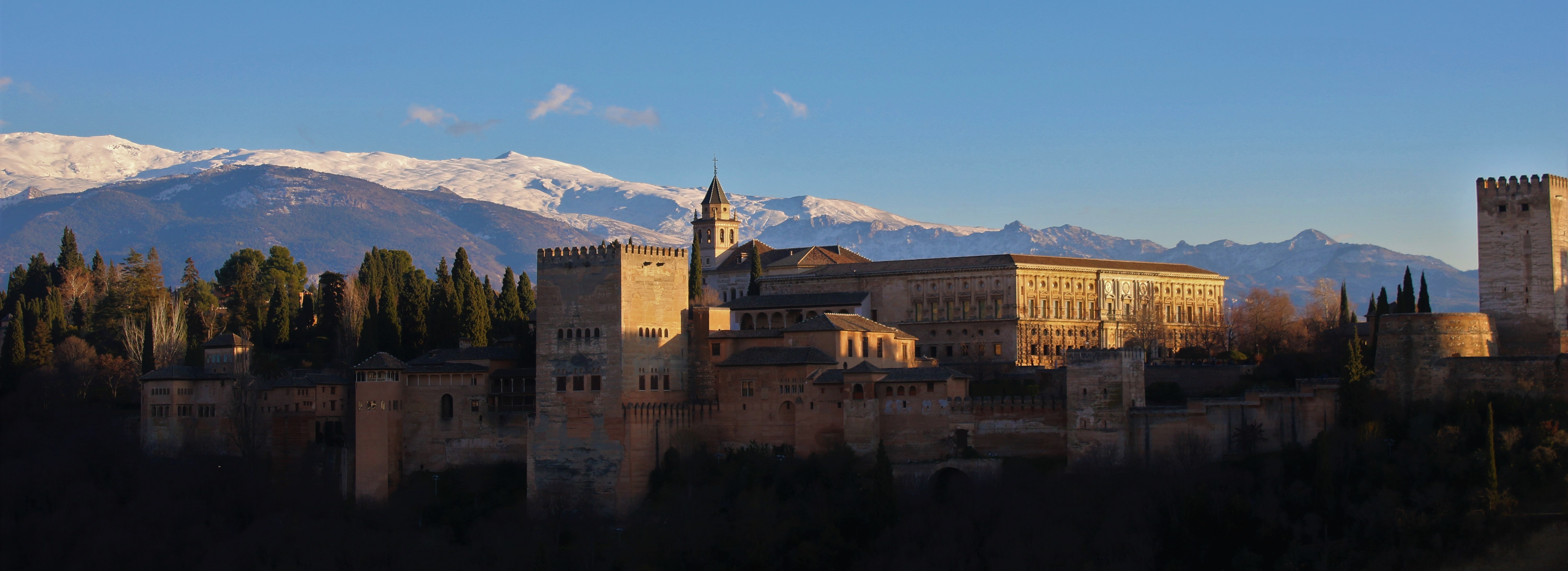
Panorama of the Alhambra
The Alhambra Palace stands out among the medieval palaces for its sophisticated architecture, complex decoration, and many exquisite gardens and fountains. Its intimate settings are designed on a scale that tourists find graceful and welcoming. In order to understand the design of this palace, one must know about its history. The planning behind this establishment heavily reflects the ideas of Muslim dominion in Southern Europe.

The Tower of Justice (Puerta de la Justicia) is the original entrance gate to the Alhambra, built by Yusuf I in 1348.
It is surprising to think mere nomads from the deserts brought about such drastic changes in the lifestyle of people around the world after the revelation of the holy religion known as Islam by the great Prophet Muhammad (PBUH). From then on, the world has progressed in ways beyond imagination. Baghdad during the early years was the metropolis of modern lifestyle, art, and education. In comparison to Europeans, Muslims in Northern Africa had a lavish lifestyle.

Detail of Islamic calligraphy in Mexuar Hall: و لا غالب إلا الله, “There is no victor but God”
Islam made its way to Europe when the “Moors” invaded Visigothic Spain in the 8th century. Nearly all of the Iberian Peninsula was conquered by largely Moorish Muslim armies from North Africa. Such conquests were part of the extension of the Umayyad Caliphate. Islamic Spain became a multi-cultural blend of people from three main monotheistic religions: Muslims, Christians, and Jews.

A Court in the Alhambra at the Time of the Moors, Edwin Lord Weeks, 1876
Muslim communities began to expand and Cordoba became the capital of the caliphate since Abd-ar Rahman III and became one of the great Muslim civilizations. The Muslim era in Spain is often portrayed as the ‘golden age’ of learning in which libraries, schools, public baths were developed, and literature, poetry and architecture prevailed. Cordoba became a centre of learning and culture that rivalled Baghdad. As years passed, more people started settling in Cordoba which became a megacity by the 10th century. Cordoba was recognized as a centre of learning, home to more than 80 libraries and educational facilities that offered knowledge of medicine, mathematics, botany, astronomy. It had a prosperous economy and manufactured products including leather, metalwork, glazing, and textiles, as well as agricultural produce and products, including a range of fruit and vegetables, herbs, and spices and also materials such as cotton, flax and silk.

Illustration from Recuerdos y bellezas de España. Reino de Granada by Francisco Javier Parcerisa, 1850
With the collapse of the Umayyad Dynasty in the mid 11th century, the economy of Cordoba also began to deteriorate and later it subsequently became part of the Taifa of Córdoba. Islamic rule weakened after Córdoba was captured by King Ferdinand III of Castile in 1236. Finally, the end of Muslim rule in Spain came in 1492 when Grenada was conquered.
The heartland of Muslim rule was Southern Spain or Al-Andalus, the streets of which still reflect its medieval past. While the rest of Europe was going through its dark ages, Cordoba became the most sophisticated metropolis of the continent during the Muslim rule. The Muslim city came to be known as the ‘city of light’ because of its well-paved roads, street lights, and beautiful palaces. The people lived in big houses with beautiful streets, gardens and fountains. The streets were fragrant with orange and lemon trees that the Arabs brought from India. Paris was nowhere near as established as Cordoba at the time. One of the greatest architectural works of the city was the Great Mosque of Cordoba built by Abd-ar Rahman I in 784 AD.
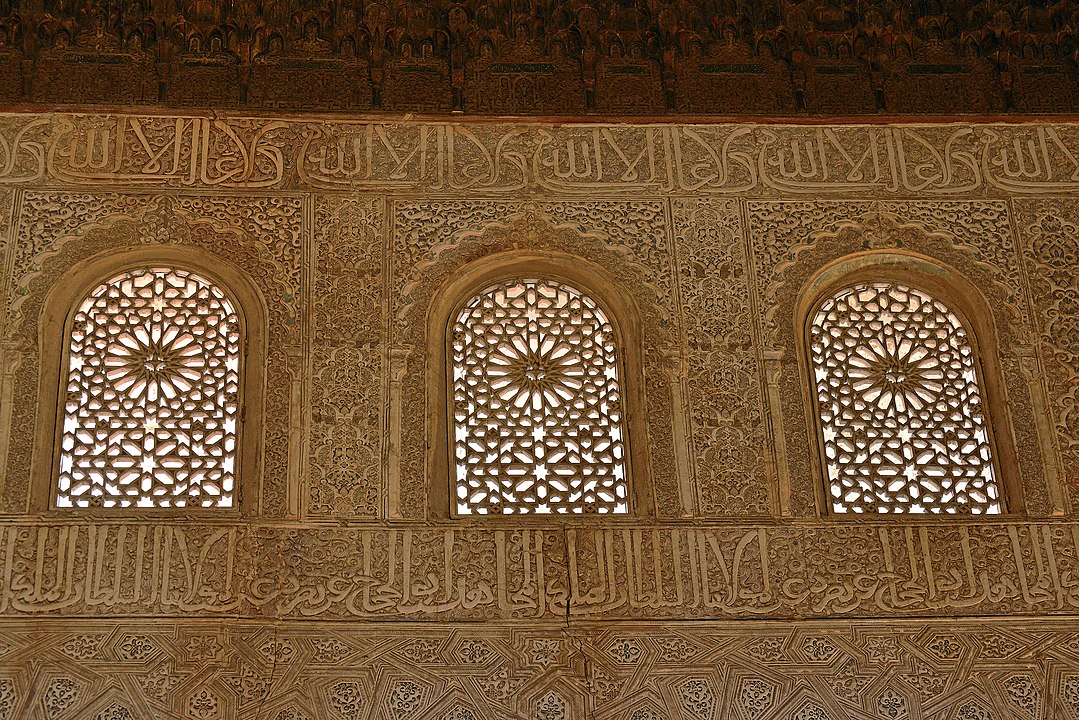
Windows of the Court of Myrtles
The Great Mosque, now known as Cordoba Cathedral was one of the grandest of the Islamic empire. It was the biggest mosque in the largest city in Southern Europe. The church-tower used to be a minaret overlooking the expansion of the mosque. The view from the tower was and still is, breathtaking. Tourists still flock to see the mosque/cathedral and bask in its glory. Many modern cathedrals were inspired by the design of this Muslim creation. Cordoba was the pageant of prosperity and enlightenment during Muslim rule. A Saxon nun once called the city the ornament of the world. Christians of Northern Europe were thoroughly impressed by the cities of Southern Spain.

“Honeycomb,” “stalactite,” or “muqarnas” vaulting in the Hall of the Abencerrajes
Just like the Mosque, the Alhambra Palace portrays the medieval glory of Muslim Spain. It is the most famous example of Islamic architecture and the best remaining example of what a medieval Muslim palace would look like. The splendid marble pillars and geometric plasterwork portray a life extraordinary luxury that no longer exists. The design of the palace is like a symphony of different elements brought together to provide exquisite enjoyment.

Nasrid shell vase in the Alhambra
The Muslim elite relished the good life in this palace, relaxing in luscious carpets surrounded by fragrances, perfumes, and music, discussing different matters of religion and Greek philosophy, while they enjoyed spiced delicacies served in Chinese pottery. The lavish lifestyle that people had during the Islamic reign in Spain was incomparable to the rest of the continent. The Muslims contributed in all fields to flourish the country; from literature to agriculture. Their existence in Spain should always be preserved and cherished.
